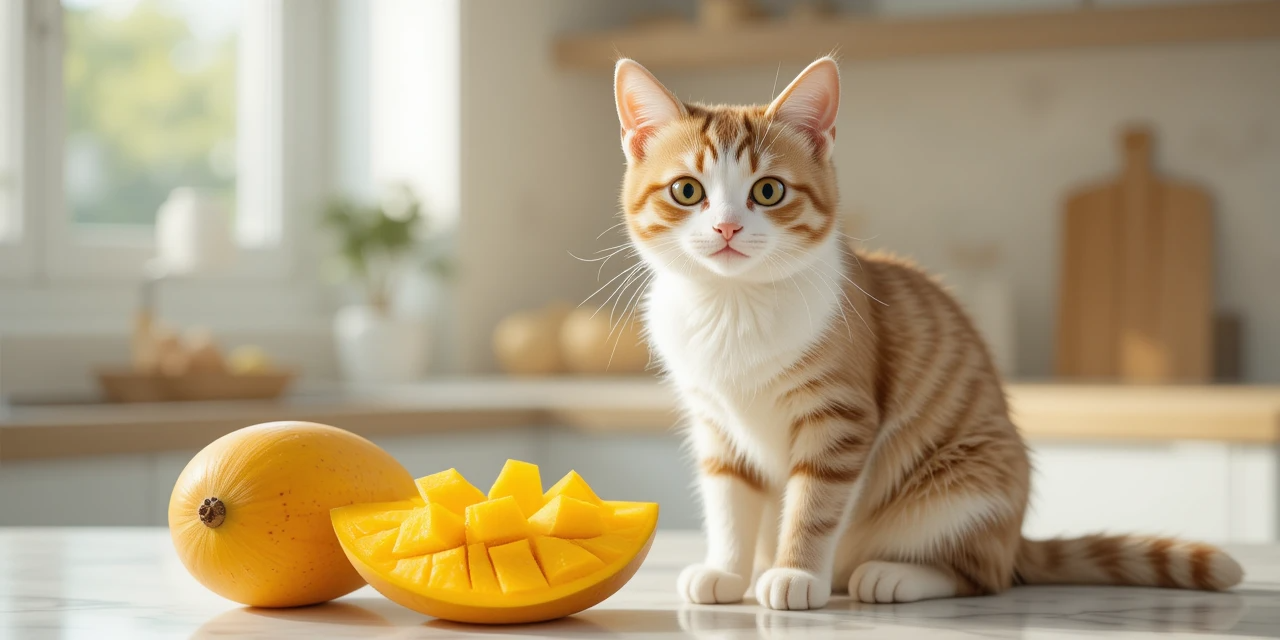Can Cats Eat Mango? Everything You Need to Know Before Sharing This Tropical Treat
It’s a sunny afternoon, you’re enjoying a sweet slice of mango—and your cat is eyeing it with curiosity. You wonder: Can cats eat mango safely? This tropical fruit may be a favorite for many humans, but is it a smart snack for your feline friend? Let’s dive into the juicy details.
Can Cats Eat Mango?
Yes, cats can eat mango in small, controlled amounts—but only the soft, ripe flesh. Mango is non-toxic to cats, but it should be considered a rare treat rather than a regular part of their diet. Cats are obligate carnivores, meaning their digestive systems are designed primarily for meat, not fruit.
Nutritional Overview
Mangoes are rich in:
- Vitamin A – supports eye health and immune function.
- Vitamin C – an antioxidant (though cats produce their own).
- Fiber – aids digestion.
- Natural sugars – which can cause issues in large amounts.
While these nutrients benefit humans, they offer limited value to cats. The natural sugars especially can contribute to weight gain or diabetes in sedentary pets.
Potential Benefits
In moderation, mango may offer a few perks:
- Hydration: With a high water content, mango can be refreshing, especially in summer.
- Fiber: A small amount might support digestion if your cat is constipated.
- Enrichment: New tastes and textures can provide sensory stimulation.
Still, these benefits are minimal compared to a proper feline diet.
Risks and Precautions
While mango flesh is safe, there are some red flags:
- High sugar content: Too much can lead to obesity, diabetes, or digestive upset.
- The pit (seed): It’s a choking hazard and contains small amounts of cyanide.
- The skin: Tough to digest and may cause vomiting or diarrhea.
- Overfeeding: Even healthy treats in excess can lead to imbalances.
Never offer mango if it’s unripe, moldy, or processed (like dried or canned with syrup).
Safe Feeding Guidelines
To safely offer your cat mango:
- Wash thoroughly to remove pesticides.
- Peel the skin and remove the pit.
- Cut into small, bite-sized cubes—about the size of a cat treat.
- Limit portions: One or two small cubes, no more than once or twice a week.
- Supervise your cat while eating to watch for choking or gagging.
👉 Avoid dried mango—it’s often loaded with added sugars and preservatives.
Special Considerations
- Kittens: Skip mango altogether. Their digestive systems are too sensitive for sugary fruits.
- Cats with diabetes, obesity, or GI issues: Always consult your vet before introducing new foods.
- Allergies: While rare, cats can show allergic reactions to new ingredients.
Signs of Adverse Reactions
If your cat shows any of the following after eating mango:
- Vomiting
- Diarrhea
- Lethargy
- Excessive drooling or pawing at the mouth
🚨 Stop feeding mango and contact your vet immediately.
Conclusion
Yes, cats can eat mango—but only occasionally, in small amounts, and with proper preparation. While mango offers a fun treat and minor hydration benefits, it’s not a necessary part of your cat’s diet. When in doubt, always consult your veterinarian.
Remember: Your cat’s best treat is love, attention, and a species-appropriate diet.
FAQs
Can cats eat mango skin?
No. Mango skin is tough to digest and may cause GI upset.
Is mango juice safe for cats?
No. It’s often loaded with added sugars and lacks fiber. Stick to fresh, plain mango pieces.
How often can I give my cat mango?
Once or twice a week, in tiny portions—as a treat, not a meal.


